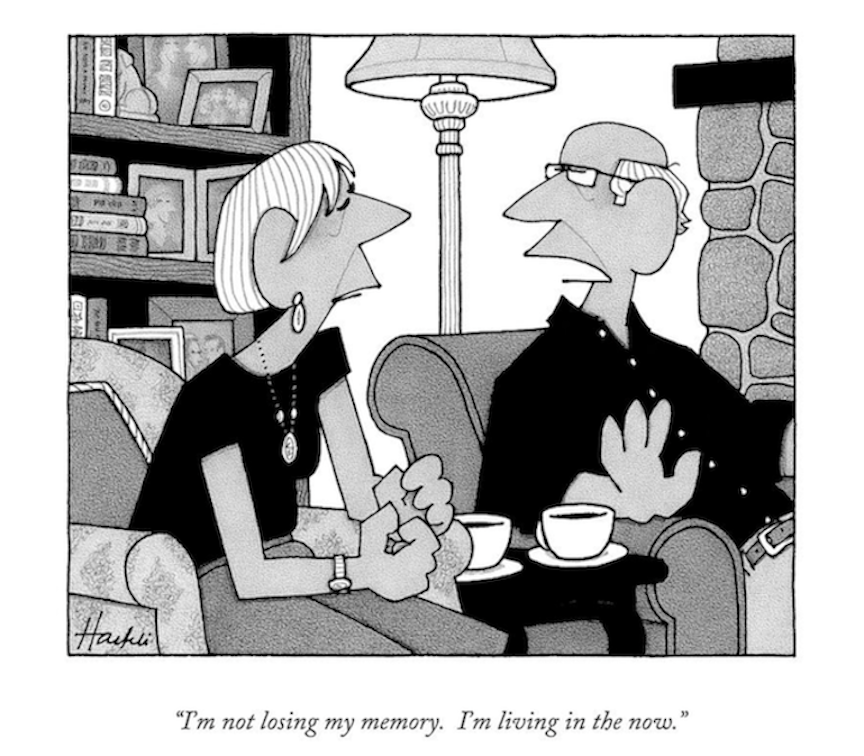When I saw this clever New Yorker cartoon by William Haefeli it reminded me of the one by Karl Stevens. Both humorously emphasize the need to be present—to learn to live in the moment, in the now.
Karl’s cartoon deals with the existential angst of dandelions in their fluffy white seed head phase, where the wiser one advises the worried one: “The wind, the wind, that’s all you think about—you gotta learn to live in the moment.”
William’s cartoon shows a wife’s frustration with her husband’s memory loss, and his clever way of dealing with it: “I’m not losing my memory. I’m living in the now.”
In a way, when it comes to dementia, the present moment is all some afflicted seniors are eventually left with as they forget the wounds from their past and stop worrying about an unknown future. A welcome relief. But the present moment is all that the rest of us have as well. It all comes down to how much of it are we aware of, and actually, happily, living.
To see more of William Haefeli’s cartoon art, visit the Condé Nast Store. He also has cartoons posted on the Punch Magazine website in the UK. William Haefeli was interviewed for A Case For Pencils. He was also featured in a more personal article at the Advocate: Drawing on life.
New Yorker cartoon editor Bob Mankoff is quoted in the Advocate article talking about seeing a cartoonist’s comic style and a personality. “Sometimes it’s commentary, sometimes satire, sometimes absurdity, sometimes what I call ludic, a mind play. It’s someone communicating his ideas through the medium of humor. Bill is one of the best examples of it—his cartoons are social commentary.”
It took Bill Haefeli 19 years of failed submissions to the New Yorker, until Mankoff became cartoon editor, when he received his first acceptance. “Bill is an interesting cartoonist because he thinks of a broad range of issues—gay and straight,” explains Mankoff. “He has a world that’s not just a joke. It’s bigger than a stereotype.”
This related post—Funny cartoons make us laugh ‘cuz they’re true.—opens with a very funny and observant Bob Mankoff cartoon.
— Written and compiled (citing sources) by Ken Chawkin for The Uncarved Blog.



